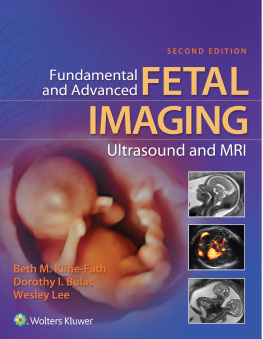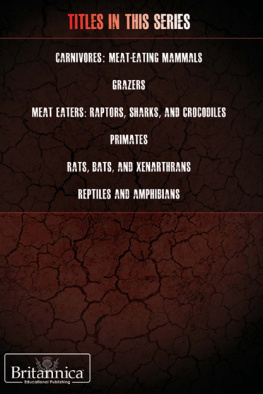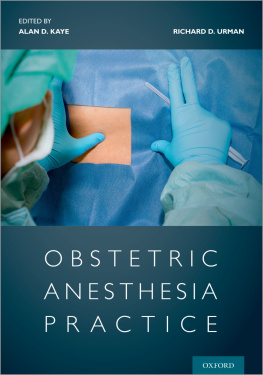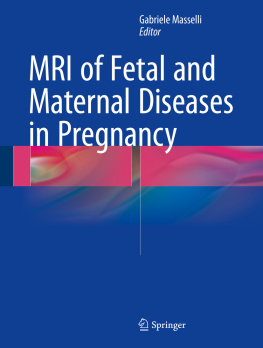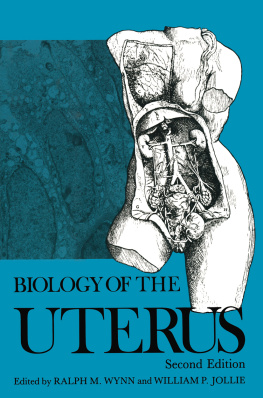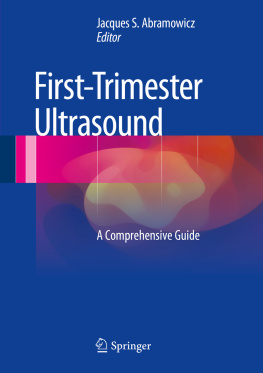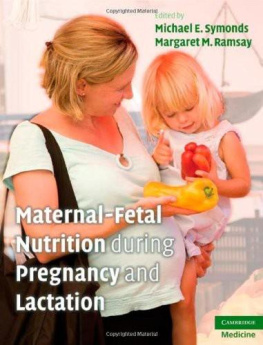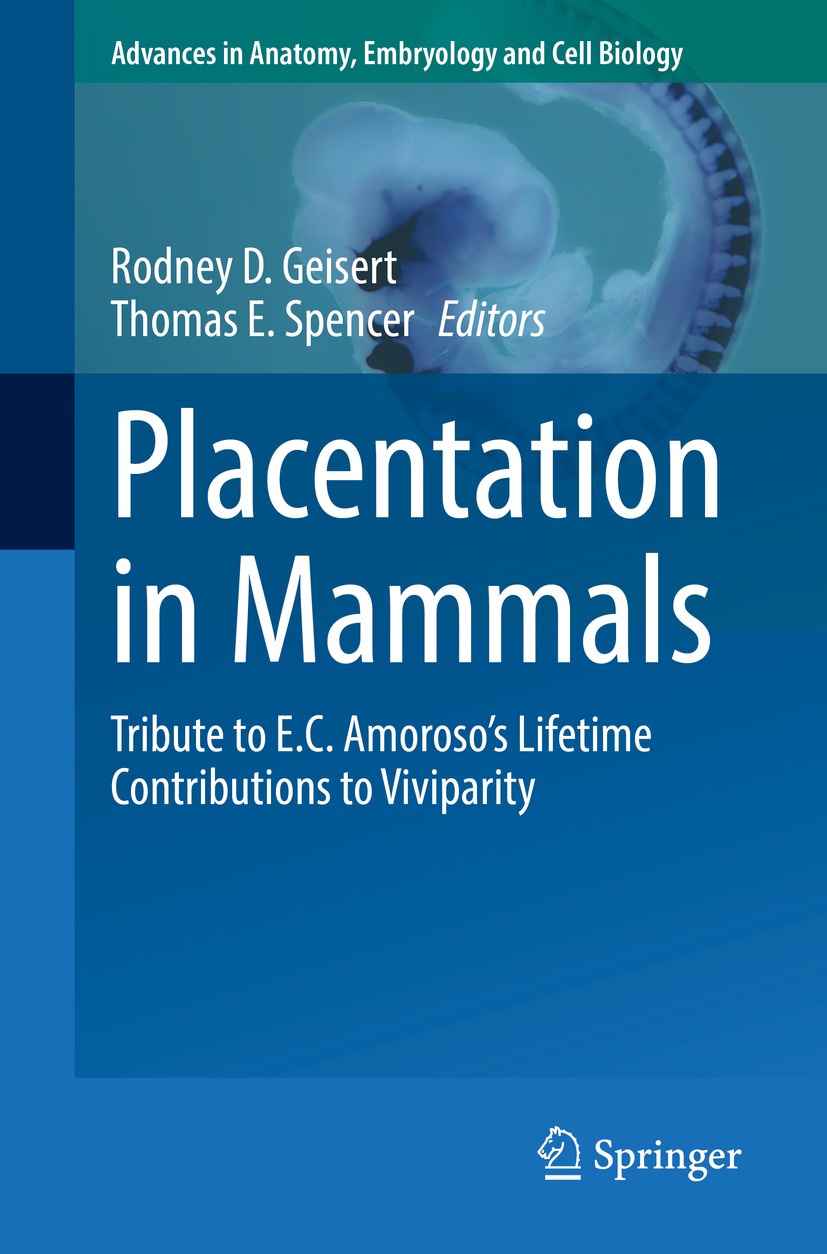Volume 234
Advances in Anatomy, Embryology and Cell Biology
Editor-in-Chief
Peter Sutovsky
Division of Animal Sciences and Department of Obstetrics, Gynecology and Womens Health, University of Missouri, Columbia, MO, USA
Series Editors
Z. Kmiec
Department of Histology and Immunology, Medical University of Gdansk, Gdansk, Poland
Michael J. Schmeisser
Institute of Microscopic Anatomy and Neurobiology, University Medical Center of the Johannes Gutenberg University, Mainz, Germany
Baljit Singh
University of Saskatchewan, Saskatoon, SK, Canada
Jean-Pierre Timmermans
Laboratory of Cell Biology and Histology/Core Facility Biomedical Microscopic Imaging, Department of Veterinary Sciences, University of Antwerp, Wilrijk, Belgium
Sven Schumann
Inst, f. Mikroskop. Anatomie u. Neurobio, Johannes Gutenberg University of Mainz, Mainz, Rheinland-Pfalz, Germany
Advances in Anatomy, Embryology and Cell Biology publishes critical reviews and state-of-the-art research in the areas of anatomy, developmental and cellular biology. Founded in 1891, this book series has a long standing tradition of publishing focused and condensed information on a given topic with a special emphasis on biomedical and translational aspects.
The series is open to both contributed volumes (each collecting 7 to 15 focused reviews written by leading experts) and single-authored or multi-authored monographs (providing a comprehensive overview of their topic of research).
Advances in Anatomy, Embryology and Cell Biology is indexed in BIOSIS, Journal Citation Reports/Science Edition, Medline, SCImago, SCOPUS, Science Citation Index Expanded (SciSearch), Zoological Record.
More information about this series at http://www.springer.com/series/102
Editors
Rodney D. Geisert and Thomas E. Spencer
Placentation in Mammals
Tribute to E.C. Amorosos Lifetime Contributions to Viviparity
1st ed. 2021

Logo of the publisher
Editors
Rodney D. Geisert
Division of Animal Sciences, University of Missouri, Columbia, MO, USA
Thomas E. Spencer
Division of Animal Sciences, University of Missouri, Columbia, MO, USA
ISSN 0301-5556 e-ISSN 2192-7065
Advances in Anatomy, Embryology and Cell Biology
ISBN 978-3-030-77359-5 e-ISBN 978-3-030-77360-1
https://doi.org/10.1007/978-3-030-77360-1
Springer Nature Switzerland AG 2021
This work is subject to copyright. All rights are reserved by the Publisher, whether the whole or part of the material is concerned, specifically the rights of translation, reprinting, reuse of illustrations, recitation, broadcasting, reproduction on microfilms or in any other physical way, and transmission or information storage and retrieval, electronic adaptation, computer software, or by similar or dissimilar methodology now known or hereafter developed.
The use of general descriptive names, registered names, trademarks, service marks, etc. in this publication does not imply, even in the absence of a specific statement, that such names are exempt from the relevant protective laws and regulations and therefore free for general use.
The publisher, the authors and the editors are safe to assume that the advice and information in this book are believed to be true and accurate at the date of publication. Neither the publisher nor the authors or the editors give a warranty, expressed or implied, with respect to the material contained herein or for any errors or omissions that may have been made. The publisher remains neutral with regard to jurisdictional claims in published maps and institutional affiliations.
This Springer imprint is published by the registered company Springer Nature Switzerland AG
The registered company address is: Gewerbestrasse 11, 6330 Cham, Switzerland
In Memoriam
William Richard (Twink) Allen, CBE, FRCVS, ScD
29 August 19406 June 2021
Over the past 50 years, Twink Allen, as he was universally known, was arguably the most influential individual worldwide in the field of equine reproduction, a status achieved through a combination of original, first-class scientific investigations and practical application of the results of his own research efforts and those of others. Those practical advances have so greatly improved the efficiency of horse breeding that reproductive problems are no longer at the top of the list of challenges in the equine industry. Twinks contributions to this volume on placentation in the horse and elephant bookend the final chapter of a remarkable career. It is fitting that this book reflects also on the life and work of E. C. Amoroso, who was a friend and mentor to Twink in his early years in Cambridge.
An Antipodean by birth, Twink was raised in New Zealand and completed his veterinary training at Sydney University in Australia. The dark cloud of a serious automobile accident during his first year of veterinary practice in New Zealand had a silver lining. A full year in hospital led Twink to explore postgraduate study and resulted in a scholarship to undertake a PhD in England under the mentorship of Roger Short, FRS. As part of his PhD thesis research at the University of Cambridge, Twink developed an assay for equine Chorionic Gonadotrophin (eCG) that became the international standard for many years (Allen 1969b). He used this assay to ascertain the levels of eCG in the blood of horse mares and donkey jennies carrying intra- and interspecies conceptuses (horse, donkey, mule, and hinny). This work was published as a single author paper inNature(Allen 1969a)quite extraordinary for a young PhD candidate, even at Cambridge! The data were amazingthey showed a pattern of hormone levels in the four types of pregnancy that can best be explained by the theory of genomic imprinting, a phenomenon that was not elucidated for more than two decades after this publication. This is an example of how Twink Allens work was often ahead of its time, too often for it to be by chance alone. Rather, it reflects Twinks insight, drive, and even his impatience with the deliberate pace of scientific investigation. Twink always worked with a sense of urgency that propelled his career and those of his students and colleagues.
Following completion of his PhD, Twink remained in England with his rapidly growing family. He was soon named the inaugural Director of the British Thoroughbred Breeders Association Equine Fertility Unit, located initially on the grounds of the British governments Animal Research Station on the outskirts of Cambridge. In this outstanding scientific environment, Twink attracted a bevy of veterinary surgeons and scientists to his research group, and they took full advantage of the expertise in reproductive biology around them.
In the first years of his appointment, Twink made the seminal discovery that the equine endometrial cups, which are the sole source of eCG, are of fetal, and not maternal, origin, as had been thought for the previous half-century (Allen et al. 1973). The endometrial cup trophoblast cells originate from the differentiation of the invasive trophoblast cells of the chorionic girdle. Twink championed the idea that the maternal lymphocyte response to the endometrial cups represents a form of cellular immunity directed against paternally inherited antigens expressed by the trophoblast cells of the cups. Twink pioneered techniques of surgical and nonsurgical embryo transfer in equids (Allen and Rowson 1975) and used them to investigate maternal anti-fetal immune responses in interspecies (i.e., mule and hinny) and extraspecies (e.g., donkey-in-horse) pregnancies, studies which rank among the most imaginative experiments in pregnancy immunology undertaken in any species. This research extended the bounds of maternal immunological tolerance of the fetus and at the same time enabled the use of embryo transfer to propagate endangered species (Allen and Short 1997).



